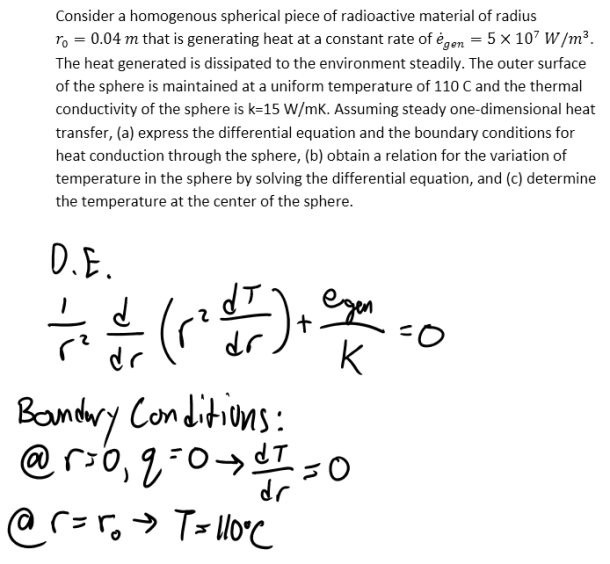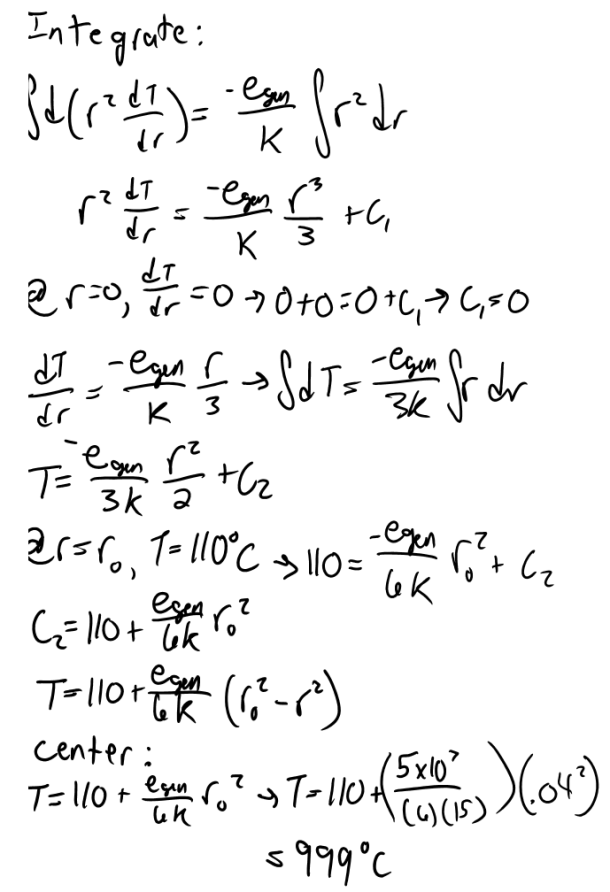Consider a homogenous spherical piece of radioactive material of radius r0=0.04 m that is generating heat at a constant rate of 5x10^7 W/m^3. The heat generated is dissipated to the environment steadily. The outer surface of the sphere is maintained at a uniform temperature of 110 C and the thermal conductivity of the sphere is k= 15 W/mK. Assuming steady one dimensional heat transfer, (a) express the differential equation and the boundary conditions for heat conduction through the sphere, (b) obtain a relation for the variation of temperature in the sphere by solving the differential equation, and (c) determine the temperature at the center of the sphere.


Consider a homogenous spherical piece of radioactive material of radius r0=0.04 m that is generating heat at a constant rate of 5x10^7 W/m^3. The heat generated is dissipated to the environment steadily. The outer surface of the sphere is maintained at a uniform temperature of 110 C and the thermal conductivity of the sphere is k= 15 W/mK. Assuming steady one dimensional heat transfer, (a) express the differential equation and the boundary conditions for heat conduction through the sphere, (b) obtain a relation for the variation of temperature in the sphere by solving the differential equation, and (c) determine the temperature at the center of the sphere.

